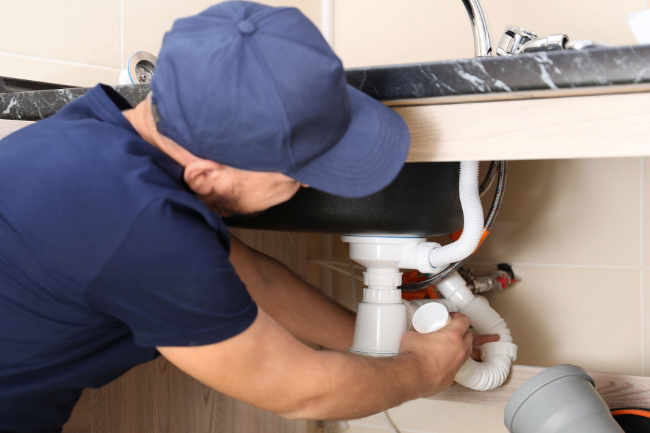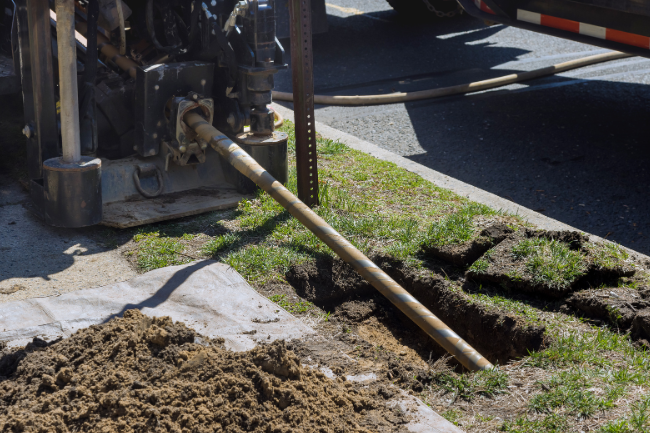The 5 Best Things About Sectional Point Repair
Posted by William Heinselman on
 An innovative solution to minor or concentrated pipe damages, sectional point repair is just one of many plumbing techniques today using trenchless technologies; technologies which eliminate the burden of large scale digging (or, “trenching”), and lower overall operation costs. These sectional repairs can often be completed in a single day, using industrial strength liners and epoxy resins to effectively seal any pipe damages in your home or business’s plumbing.
An innovative solution to minor or concentrated pipe damages, sectional point repair is just one of many plumbing techniques today using trenchless technologies; technologies which eliminate the burden of large scale digging (or, “trenching”), and lower overall operation costs. These sectional repairs can often be completed in a single day, using industrial strength liners and epoxy resins to effectively seal any pipe damages in your home or business’s plumbing.
1.) You Don’t Have To Renovate Your Entire Pipe
The greatest reward of sectional point repair for home and municipal pipe systems is in hinted at in the technique’s name itself: sectional point repair. With this trenchless technique, there’s no need to repair or replace your entire pipe! This is ideal for pipe lines with more narrowed, focused areas of damage, in circumstances where a full pipe repair would be impractical.
These innovative repairs begin with a professional video inspection, in which small cameras attached to the end of snaking tools are run through a damaged pipe. These inspections identify the extent and exact location of damages, allowing for you and your plumbing specialist to choose the best repair steps. If the damage is confined in a small pipe section, or limited to minor cracks and corrosion, sectional point repair is likely the best repair option.
The sectional repair process is completed with Perma-liner, epoxy solutions, which line and coat over damaged sections of pipe. A new pipe liner is then fed through the existing pipe, and cures to the inner walls with these epoxy resins, a process which is completed in mere hours. This creates a durable, lasting seal that can keep roots and other intrusions out, and your pipe lines running smoothly. There is no need to repair your entire pipe if cracks and pipe breaks are concentrated or minor; sectional point repair is the perfect solution in these cases.
2.) No Need For Digging
Sectional point repair is part of a larger repair method that is known as trenchless repair, which is called such because it is completed using trenchless technology, which eliminates digging and unsightly lawn damage. In traditional pipe repairs, full sections of pipe need to be excavated and replaced; a time-consuming and costly process that delivers only adequate results and poor investment returns.
With trenchless sectional repairs, plumbing specialists can cure and line your existing, damaged pipe through two small entry- and exit-points, on either side of a damaged pipe. As opposed to spending days and long labor hours digging a pipe out, trenchless experts can fully renovate your pipe in less than a day, which limits a repair’s burden on you and your family.
Avoid costly, damaging and even dangerous traditional pipe repair. Consider what trenchless sectional point repair can do for your next time your pipes need repairing.
3.) Quick and Easy Installation
As we briefly described in the previous section, trenchless sectional point repairs are done nearly effortlessly; this is the primary reason they are so affordable. First, the exact extent of a pipe line’s damage is assessed with a snaking video camera tool, which can be fed through your pipes to help plumbers visually detect not only damaged areas, but also damage causes. From here, your plumbing professional will determine if repairs are necessary for your pipes, and help you choose the best trenchless option for your unique situation.
Following inspection, and if plumbing crew deems trenchless repairs necessary, they will create and access two small repair points at the ends of your affected pipe line (sewer and home end points for home repairs, upstream and downstream points for municipal repairs). Through these opening points, trenchless technology specialists will clean the insides of pipes to prepare them for resin and liner application.
Once cleaned, the plumbing crew can apply the epoxy resin to the inner walls of the affected pipe, and apply the innovative Perma-liner to damaged areas through air pressurization. This trenchless solution creates a lasting seal, effective against virtually any future damages.
4.) Affordable Under Any Budget
As these innovative repairs can be completed in a fraction of the time of traditional repairs, they return on their initial investment almost instantly. The cost for traditional pipe repairs can run as high as $25,000, factoring in overhead labor costs, restorative landscaping and the actual resources needed to complete the repairs; meanwhile, professional, trenchless re-lining techniques can completely repair damaged pipe sections in well under $9,000.
Trenchless sectional point repair virtually eliminates unnecessary labor overheads, and mitigates the costly lawn repairs and property renovations that often come with traditional repairs. Plainly, these innovative new solutions make traditional, digging pipe repairs impractical; they are a waste of precious time, resources and your precious savings. If you’re seeking an affordable solution to pipe damages in your home or on your property, contact your local plumbing specialist and discuss the benefits of trenchless technology, and sectional point repair.
5.) Long-Lasting, Quality Results
Regarding sectional point repair, it’s not just that the initial cost is significantly less than with traditional repairs… these methods also pay they investment costs back in short time with durable, lasting results you can count on for decades and decades to come. Once installed, the Perma-liner, epoxy seals within your existing pipe lines will last for over 50 years at the very least, providing your with decades of efficient pipe flow and limiting the hazards of pipe intrusion and corrosive agents.
To learn more about innovative, durable trenchless solutions, or how sectional point repair can effectively mitigate any concentrated damages to your home or business’s plumbing system, contact the specialists at Express Sewer & Drain today.
Topics: Trenchless Technology


![Repiping Your Sacramento Home [6 Steps]](https://www.expresssewer.com/hs-fs/hubfs/plumbing%20tools%20and%20blueprints.jpeg?width=550)




